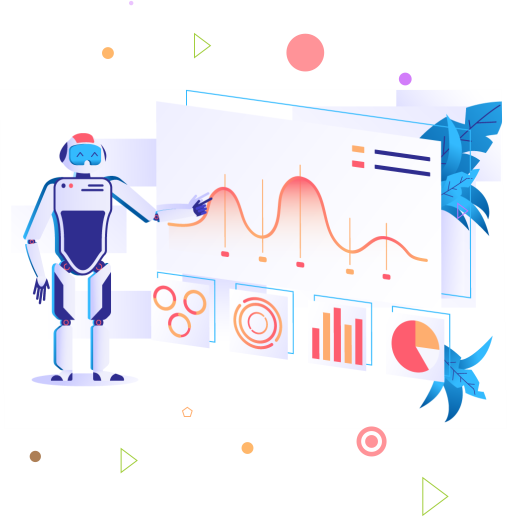
Regulating various aspects of a business and its operational units can feel slow and often too much for the human mind, which can be disastrous for the operations. Hence, automation comes to the rescue.
Although most businesses have some level of automation in finance and accounting, there are still numerous gaps filled using RPA. These gaps include tedious, laborious paperwork and data-intensive activities.
Restructuring current liabilities and receivable processes, automating accounting procedures and analysis, and banking and account verification are just a few of the domains where RPA may help you save time and money.
Robotic Process Automation (RPA) has a significant effect, guaranteeing an error-free automation process for all back-office activities in the financial sector while lowering costs, decreasing human participation, and providing a high return on investment.
According to one research, a standard invoice management procedure needs at least 76% human entries.
Manually Invoicing Difficulties
The number of invoices arriving daily in various formats, human data entry into internal processes, mistake rates, and lost papers is all on the rise. Furthermore, for contracts, the invoice must be put into the proper accounts and cost units.
If there is a price difference on an invoice, it must be submitted to the finance department for final clearance. When data needs to be manually transferred from either a Pdfs or a physical invoice to the ERP system, it becomes a time-consuming procedure prone to human errors.
Invoice automation as well as other back-office efficiency techniques
Back-office duties are frequently boring, along with being unpleasant and time-consuming. These activities, however, can be readily mechanized with RPA due to AI-driven robotics.
RPA may be used to automate any activity or process that:
-The guideline, with the ability to change decision processes on the fly
-When the same process is repeated.
-Data is input into specified fields in a repeated way, using a theme.
Organizations that want to streamline invoice handling and current liabilities (AP) operations may typically do it by using RPA software. The program may be integrated with the company's ERP system as well as other business applications.
What does this mean?
Based on the vendor invoices are processed, and thus information technology will be varied. The accounts payable automated process for indirect expenditure and cost bills would include data collection, coding (update), and delivery of the invoice to the appropriate authorizing body within the organization.
For direct expenditures, the automation program would compare the invoice data to a purchase agreement mechanically. If everything corresponds, the bill would be forwarded straight to bookkeeping for settlement with no human involvement. As a result, the ultimate objective of AP robotics is referred to as "touchless payment processing."
When entering the invoice into the ERP, which accounting regulations apply?
The correct company identifier, cost unit, accounts, and so on must be chosen when submitting the invoices to the ERP software (like SAP). It is all governed by rules, which may be put into the machine to raise the invoice instantly.
Whenever a fresh invoice from a new provider arrives and the machine does not have corresponding criteria for it, a representative of the F&A department will be asked to correlate it properly by changing the rule list (for example, specified as either an Excel sheet) so the bot can process comparable invoices easily in the long term.
Retrieval and transmission of data
Virtual assistants can call out the data on the bill using sophisticated optical character recognition (OCR) and natural language processing (NLP) skills. Machines utilize their password to log the corporation's system or enterprise resource regulatory if it isn't already unlocked after extracting the essential information from every invoice. The machines then begin processing, passing over the necessary invoice data.
ROI for businesses from RPA implementation
The following are four ROI indicators that should increase as a result of RPA implementation:
Operations in the back office were completed quickly
This varies based on the automated procedure. Companies may anticipate a 20 per cent to 110 per cent increase in process efficiency after using RPA in most instances.
Manual work In Back-office activities
A good RPA installation may eliminate approximately 70% of manual labor on aggregate. Certain businesses have realized efficiency cost saving to 1000 per cent in certain instances, based on the deployment.
Output Precision
RPA should allow 100% product consistency among automated systems to validate the effectiveness of input. Gross negligence is avoided when company rules, governance, and choices are properly designed.
Assurance of Compliance
Robots may be trained to detect compliance problems and notify workers of them at all times, allowing for safe decision-making. Robots can assist in ensuring that the legislation, norms, and regulations regulating particular procedures are obeyed at all times.
Last Thoughts
The bots will examine, transcribe, and verify essential data from sales orders to generate invoices using a combination of Robotic Process Automation (RPA) and Machine Intelligence. F&A personnel will benefit from RPA by automating invoicing and minimizing financial fines and penalties, and partial payments.